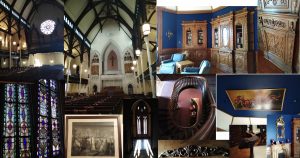We made it – 10 individual and delicious pizzas!
What are the main ingredients? Simple. Great company, fun and pizza ingredients indeed. We had it all.
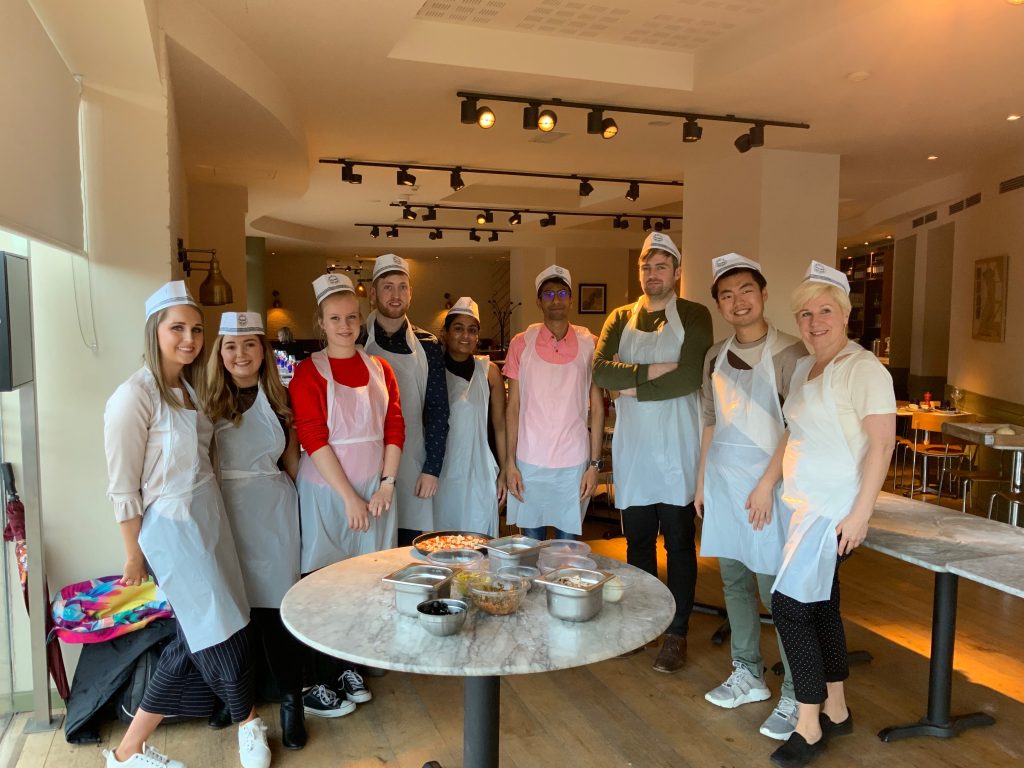
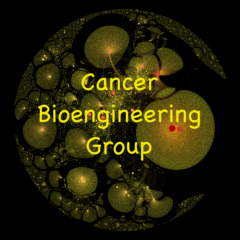
Blog about neuroblastoma research
My WordPress Blog is about neuroblastoma biology and Cancer Bioengineering Group
We made it – 10 individual and delicious pizzas!
What are the main ingredients? Simple. Great company, fun and pizza ingredients indeed. We had it all.

Here, we are – the Irish neuroblastoma research team landed at the 5th Neuroblastoma Research Symposium in Cambridge. Four poster presentations by four enthusiastic scientists. The two days crash course in neuroblastoma – vibrant, intense, informative.
I had one of the most enjoyable poster sessions in the last few years! A genuine interest in our 3D in vitro cancer models by both academics and Industry. Hope, to keep the ball rolling and strengthen these new links.
The Symposium programme was an excellent balance of the new transnational outcomes with hardcore developmental cellular programmes. From ‘How neuronal precursors select their fate and how they can escape the developmental constraints? How this knowledge can help to advance our understanding of neuroblastoma aetiology?’ to ‘New drugs that demonstrated great potency in pre-clinical studies’ via ‘how we can work together more efficiently to progress quicker’
Indeed, the success of the research meeting became possible thanks to the strategic vision and leadership of organisers!
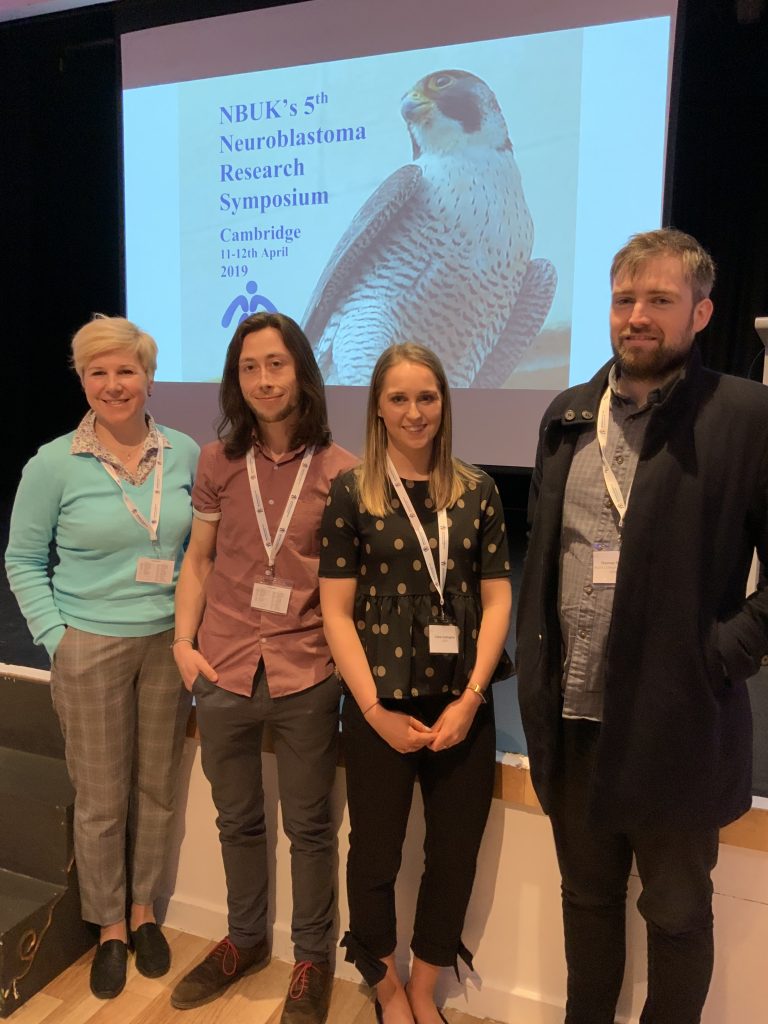
SYMPOSIUM PROGRAMME
THURSDAY 11TH APRIL
12:00 – 13:00 Registration, lunch & poster setup
13:00 – 13:10 Introduction – Neuroblastoma UK & CRUK Cambridge Centre
Session 1: Neuroblastoma biology & prognosis
Cancer Research UK Cambridge Centre Neuro-oncology Programme Session
Chair: Kate Wheeler (Oxford Children’s Hospital)
13:10 – 13:40 Sandra Ackermann (Cologne): The genetic basis of favourable outcome and fatal tumour progression in neuroblastoma
13:40 – 14:10 Rogier Versteeg (Amsterdam): The dark side of neuroblastoma
14:10 – 14:40 Katleen de Preter (Ghent): Improved diagnosis and risk stratification of paediatric cancers using liquid biopsies
14:40 – 14:55 Sue Burchill (Leeds): Self-renewing neuroblastoma cells isolated from bone marrow aspirates of children with stage M disease share a mesenchymal expression signature: an NCRI CCL CSG Neuroblastoma Group Study
14:55 – 15:15 Combined discussion
15:15 – 15:45 Tea with Posters
Session 2: Targeted & combination therapy I
Cancer Research UK Cambridge Centre Neuro-oncology Programme Session
Chair: Marie Arsenian Henriksson (Karolinska)
15:45 – 16:15 Frank Westermann (Heidelberg): Novel metabolic dependencies of MYCN-driven neuroblastoma
16:15 – 16:45 Gerard Evan (Cambridge): Is Myc really master of the universe?
16:45 – 17:00 Melinda Halasz (University College Dublin): Anti-Cancer Effects of Diphenyleneiodonium Chloride (DPI) In MYCN-Amplified Neuroblastoma
17:00 – 17:15 Evon Poon (ICR, Sutton): Pharmacological blockade of high-risk MYCN driven neuroblastoma using an orally-bioavailable CDK2/9 inhibitor
17:15 – 17:35 Combined discussion
Downing College – Main Hall.jpg
17:35 – 19:15 Poster viewing & Drinks
19:30 Symposium Dinner at Downing College (map for dinner)
FRIDAY 12TH APRIL
08:30 – 08:50 Coffee & pastries
Session 3: Neural crest & differentiation therapy I
Chair: Margareta Wilhelm (Karolinska)
08:50 – 09:20 Igor Adameyko (Karolinska): Normal development of sympathoadrenal system resolved with lineage tracing and single cell transcriptomics
09:20 – 09:50 Quenten Schwarz (Adelaide): Guiding sympathoadrenal neural crest cells to the adrenal primordia
09:50 – 10:05 Claudia Linker (King’s College London): Notch coordinates cell cycle progression and migratory behaviour leading to collective cell migration
10:05 – 10:20 Combined discussion
10:20 – 10:50 Coffee with Posters
Session 4: Neural crest & differentiation therapy II
Chair: Gareth Evans (York)
10:50 – 11:20 Karen Liu (King’s College London): ALK and GSK3 – shared features of neuroblastoma and neural crest
11:20 – 11:35 Anestis Tsakiridis (Sheffield): Efficient generation of trunk neural crest and sympathetic neurons from human pluripotent stem cells via a neuromesodermal progenitor intermediate
11:35 – 12:05 Anna Philpott (Cambridge): Using developmental mechanisms to drive differentiation of neuroblastoma
12:05 – 12:20 Combined discussion
12:20 – 13:20 Lunch with Posters
Session 5: Targeted & combination therapy II
Chair: Bengt Hallberg (Gothenburg)
Cancer Research UK Cambridge Centre Paediatrics Programme Lecture:
13:20 – 13:50 Sharon Diskin (Philadelphia): A multi-omic surfaceome study identifies DLK1 as a candidate oncoprotein and immunotherapeutic target in neuroblastoma
13:50 – 14:05 Donne Nile (Glasgow): Manipulation of cancer cell metabolism for neuroblastoma combination therapy with targeted radiotherapy
14:05 – 14:35 Suzanne Turner (Cambridge): CRISPR-dCas9 screens to identify resistance mechanisms to ALK in neuroblastoma
14:35 – 14:50 Combined discussion
14:50 – 15:20 Tea with Posters
15:20 – 15:30 Poster prizes
Session 6: Targeted & combination therapy III
Chair: John Lunec (Newcastle)
15:30 – 16:00 Per Kogner (Karolinska): The PPM1D encoded WIP1 phosphatase is an oncogene significant for cancer development and tumour progression and a druggable therapy target in neuroblastoma and medulloblastoma. A hint as to how aggressive childhood cancer manages with wild-type p53
16:00 – 16:15 Deb Tweddle (Newcastle): Preclinical assessment of MDM2/p53, ALK and MEK inhibitor combinations in neuroblastoma
16:15 – 16:30 Sally George (ICR, Sutton): A CRISPR-Cas9 genomic editing and compound screening approach identifies therapeutic vulnerabilities in the DNA damage response for the treatment of ATRX mutant neuroblastoma
16:30 – 16:45 Miriam Rosenberg (Jerusalem): Expression- and immune-profiling of neuroblastoma-associated Opsoclonus Myoclonus Ataxia Syndrome (OMAS) to identify features of auto- and tumour-immunity
16:45 – 17:00 Combined discussion
17:00 Close
Our team has expanded. Now, we are 11 – a great mix of cultures and science backgrounds! But it comes at a price – how to agree on even simple activities? Shall we go hiking? Bowling? Karting? Room Escape?
Poll it! Vualá
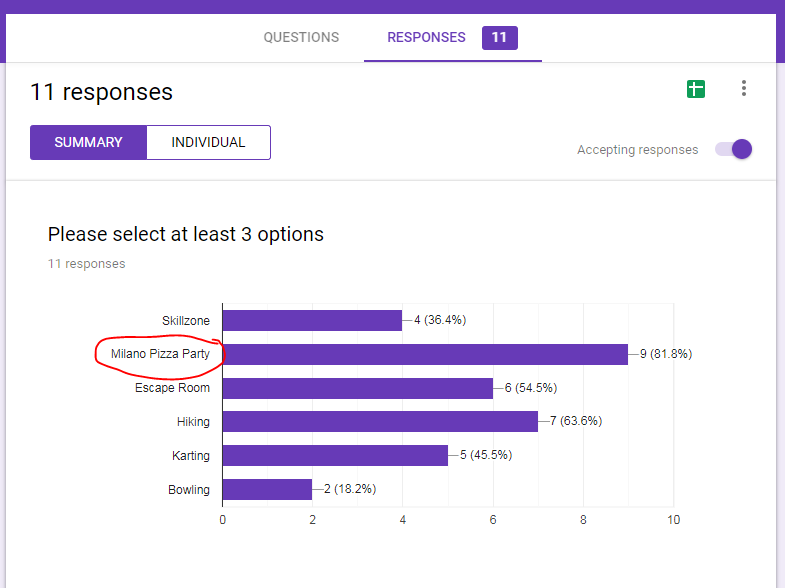
An interesting idea or research question is always motivational. But it is a sketch till you get means to answer them. We, scientists, have to shape them into a proposal showing that we know limitations and have plans B & C if things go differently to planned. Then we apply for funding here and there… and many many times. The number of rejections makes us stronger – I hope. But one day, the idea may hit it right. So, it has happened to me recently and this SFI Award brings so needed fuel to study neuroblastoma.
The development and approval of new oncology drugs are very slow processes. This is mainly due to the big differences in the physiology of cancer cells grown on plastic and in the native microenvironment. Tissue engineering of tumour systems has a great potential to bridge this gap. This Award will help to advance our 3D tissue-engineered of neuroblastoma, that can be used in testing new drugs and new combinations of existing drugs.
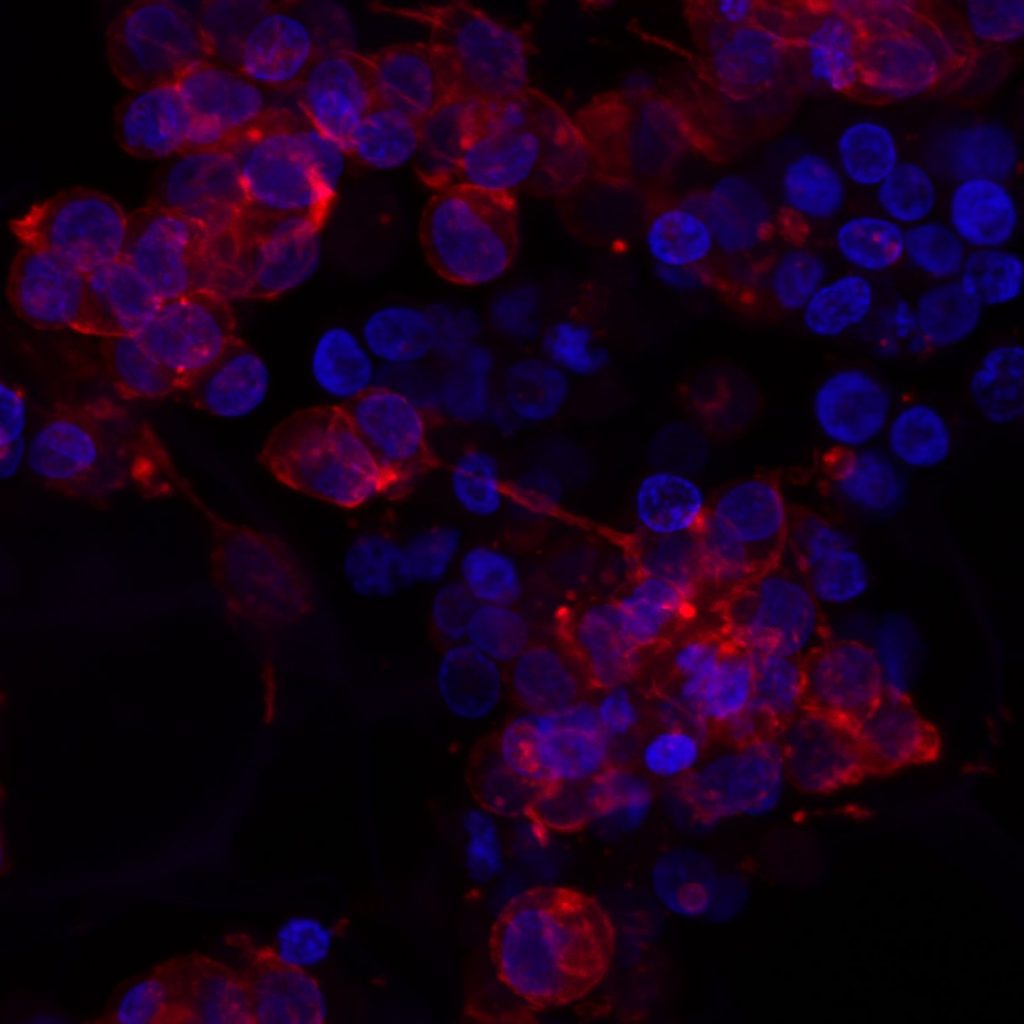
In particular, we will adapt the 3D model to screen different immunotherapies. This treatment option is very attractive both for adults and children because of its specificity and reduced side effects compared to chemotherapy, the current standard of care.
This Award will help my team to get a better understanding how neuroblastoma cells interact with the body environment, particularly with the immune system and how we can use the knowledge to develop new treatments and improve the patient outlook.
Across countries and continents, we are celebrating International Childhood Cancer Day (ICCD).We do it to raise awareness tto raise awareness of childhood cancer, its consequences for children and their parents and make it as a priority for Governments and research.
My team research is focused on neuroblastoma biology. This is a solid tumour of undeveloped nerves. Some forms of neuroblastoma spread quickly and become very aggressive and challenging to treat. We are searching for the weaknesses that can be targeted with drugs.
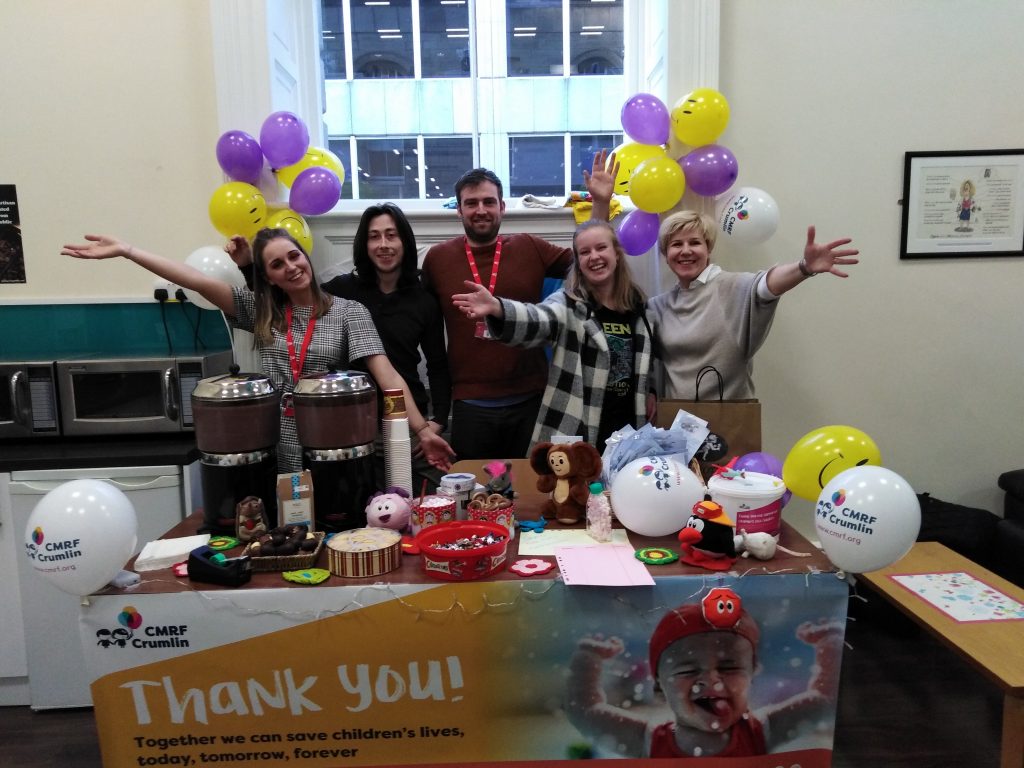
Today, we team up with Amorino to run the Hot Chocolate Morning to raise funds for Childhood cancer research charities – Children’s Medical Research Foundation/National Children’s Research Centre and the Conor Foley Neuroblastoma Cancer Research Foundation. Research advances our knowledge and helps to develop new treatments.
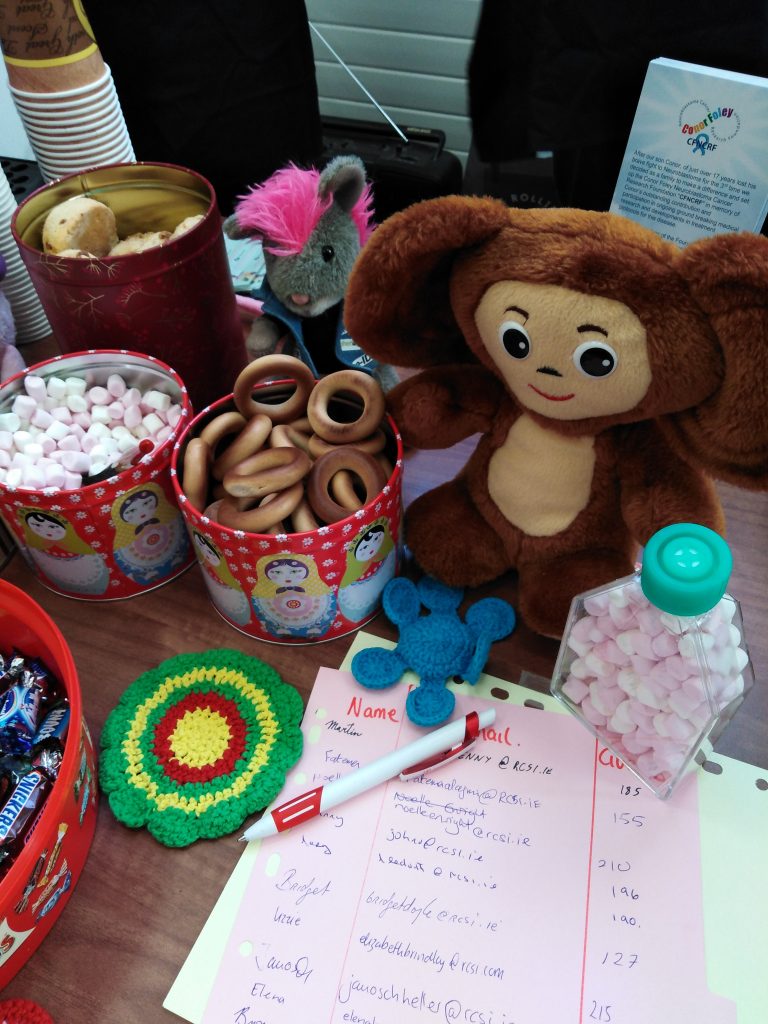
A guessing game was a part of the event. Everyone had a chance to guess how many marshmallows fitted in the cell culture flask T75. The guesses ranged from as low as 95 to as high as 500. Fortunately, one of the participants gave an absolutely correct answer. Micheal Flood put on 173 and won. Her fantastic ability to guess is incredible! Congratulations!!! Well done to all!
We raised 698.91 Euros for childhood cancer research! We thank everyone who came along and supported the Hot Chocolate Morning & the International Childhood Cancer Day 2019!
Many special thanks go to Amorino for delicious Italian hot chocolate & tasty bites contributors!
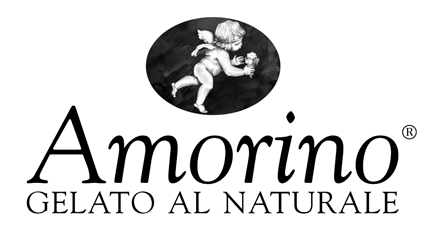
International Childhood Cancer Day (ICCD) was founded in 2002 by Childhood Cancer International (CCI). Each year on February 15th we unite together to recognise childhood cancer as a national and global child health priority & to raise support, funding and awareness of this devastating
This year we team up with Amorino to run Hot Chocolate Morning. Please come along! All proceeds go to CMRF/NCRC and CFNCRF.
If you can’t join us, you can simply follow the link and donate ‘a cup of coffee/hot chocolate’ to CMRF Crumlin, the Conor Foley Neuroblastoma Research Foundation & Childhood Cancer Foundation
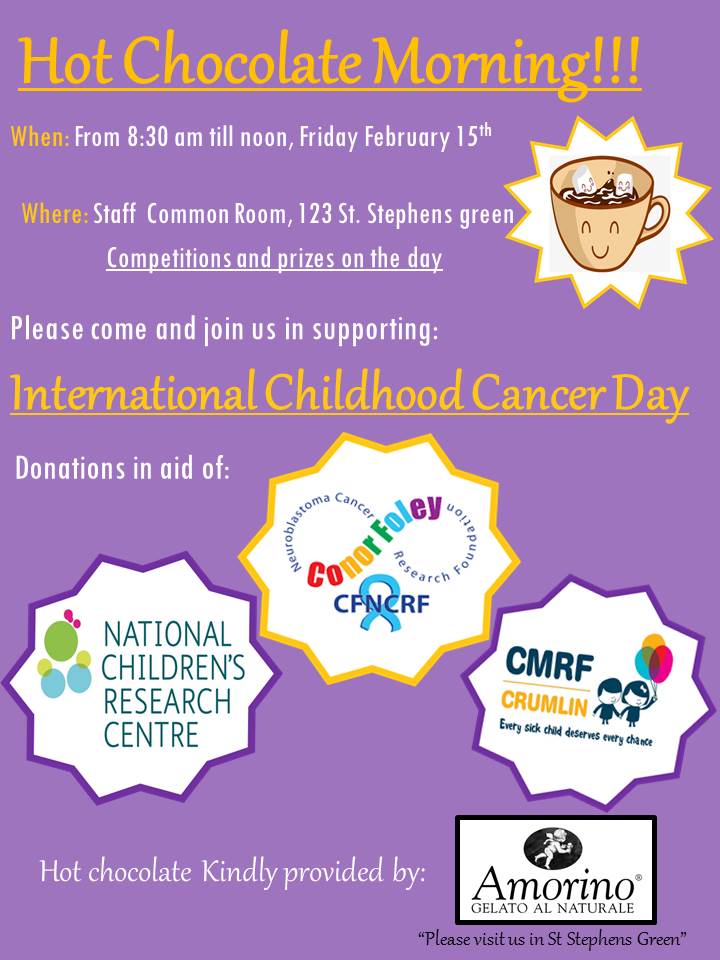
Checking the calendar, it has been a month since my last post! That month was a transition time. Collecting all that accumulated, shipping self and stuff home, settling back and reinventing the life. Learning to drive on the left side, getting used to the narrow roads and ‘snow-flake’ junctions.
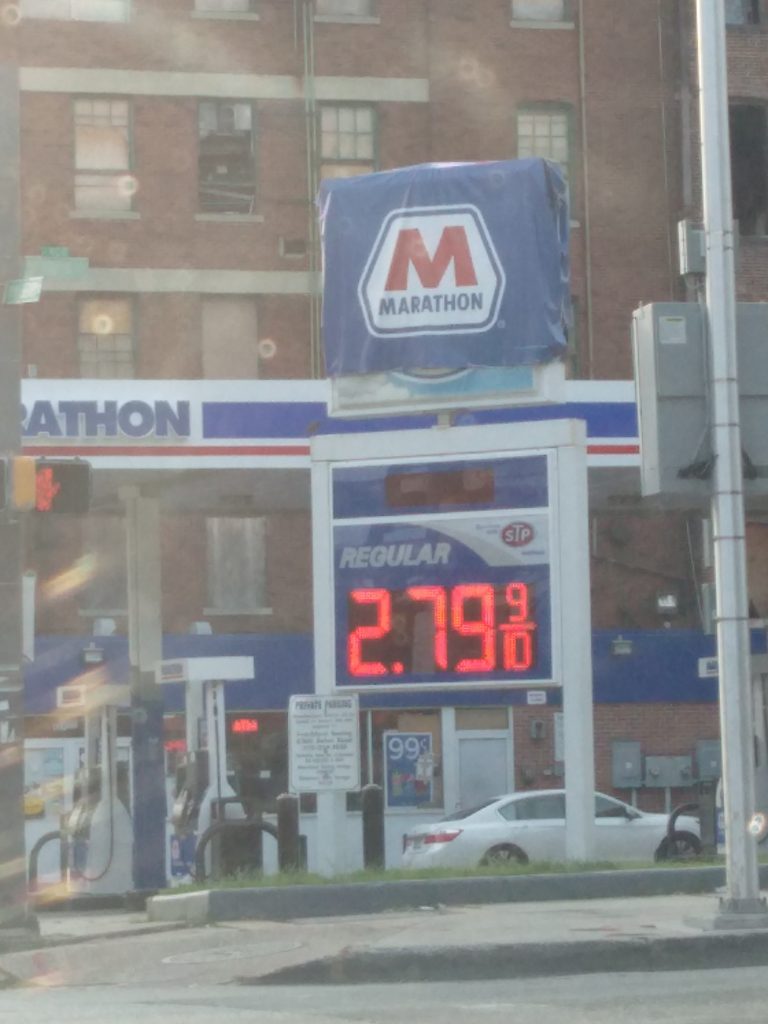
I never had a problem with driving on the right side in the US. Though, my entire driving experience as a driver has happened in Ireland driving on the left side of the road. Apparently, something that you absorb as a toddler, youngster, teenager and young adult never
What is my other big discovery? I was adopted by the big-big family and happily accepted this fact! I met 3 sisters and 3 brothers-in-law and a grandpa. Now, I miss our Sunday dinners and chit-chats…
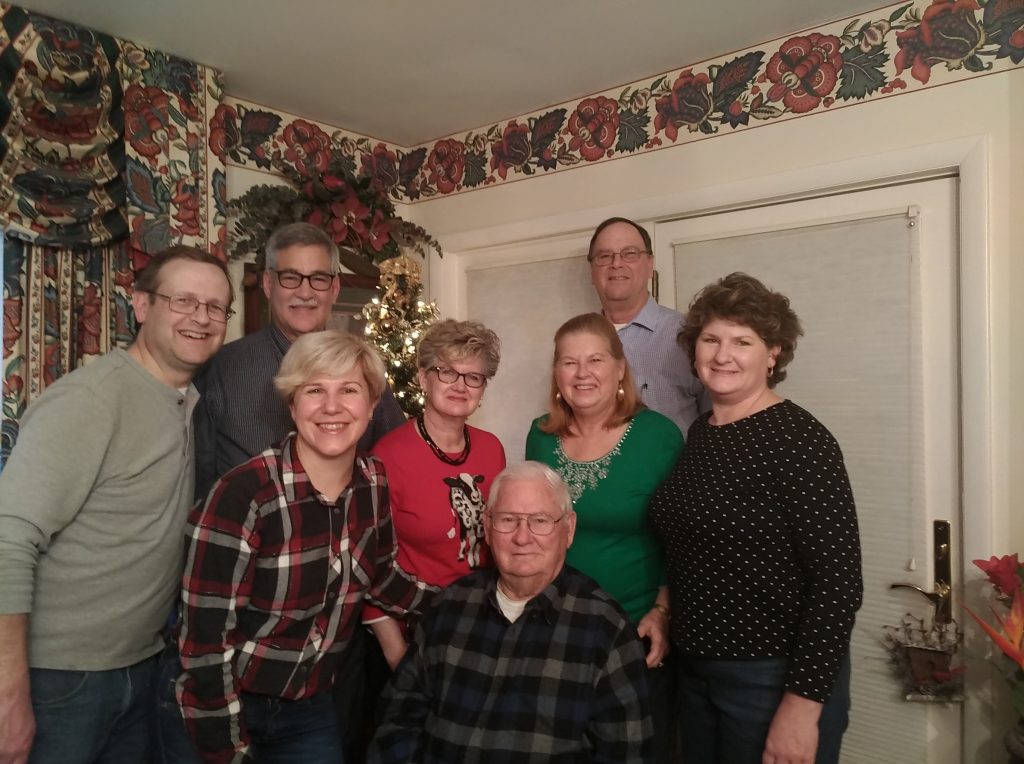
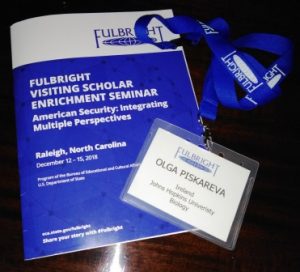 The theme of the seminar was American Security: Integrating Multiple Perspectives. With the great support from North Carolina University, we stepped out our comfort zones and explored security topics through lenses of our cultural backgrounds and life experiences. Food Security, Energy Security and Environmental Security. Eighty-four Fulbrighters from almost 40 countries were sharing their stories on how these issues are dealt with in their home countries! We learnt to talk through being open-minded, find things in common and come to a balanced solution. This is not a-one-size-fits-all solution. We have more in common than we have thought. We have become friends and partners who build bridges and connect people and countries. The Fulbright Programme helped us to realise it!
The theme of the seminar was American Security: Integrating Multiple Perspectives. With the great support from North Carolina University, we stepped out our comfort zones and explored security topics through lenses of our cultural backgrounds and life experiences. Food Security, Energy Security and Environmental Security. Eighty-four Fulbrighters from almost 40 countries were sharing their stories on how these issues are dealt with in their home countries! We learnt to talk through being open-minded, find things in common and come to a balanced solution. This is not a-one-size-fits-all solution. We have more in common than we have thought. We have become friends and partners who build bridges and connect people and countries. The Fulbright Programme helped us to realise it!
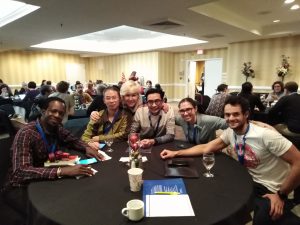
A part of the activities was a site visit. I picked the Food Bank for the very simple reason – I have never heard about such a concept. My imagination fueled by perceptions drew a warehouse full of canned and dried food for a ‘rainy day’. How big was my surprise when I saw an absolutely different picture! Many dedicated people with the huge help of volunteers collect, sort, pack and distribute all type of food from vegetables to meat for people who can’t afford to buy it themselves. They collect fresh vegetables that do not meet perfection standards (called also number 2) from farmers. Giant sweet potatoes, ‘ugly’ squash or oranges – they all have the same nutrition value as their glamour looking brothers and sisters. Why #2 should be left in the field? So the Food Bank takes them in. The Bank also educates people on how to cook healthy meals from raw products.
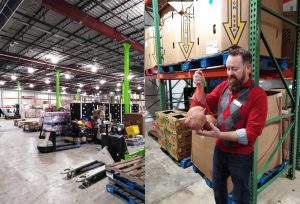
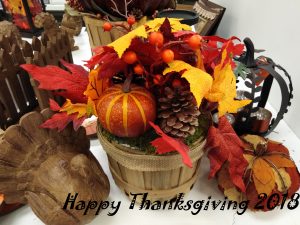 On November 22, almost all Americans and visitors celebrated Thanksgiving. Roads and airports were overcrowded a day before. Turkeys, potatoes, corn and pumpkin tarts were consumed in astronomical amounts. The New York Times cherry picked 50 recipes from the 50 states. Yamee!!!! Have a look – I am voting for Alaska’s one!
On November 22, almost all Americans and visitors celebrated Thanksgiving. Roads and airports were overcrowded a day before. Turkeys, potatoes, corn and pumpkin tarts were consumed in astronomical amounts. The New York Times cherry picked 50 recipes from the 50 states. Yamee!!!! Have a look – I am voting for Alaska’s one!
So, how was my experience? As a native American – together with the family! I drove through big and small towns, beautiful autumn sunflower fields and forests covering a mile after a mile. When I thought that I was nearly there GPS updated my route with instructions to drive another 5-10 miles. So after an hour, I joined the big gathering in Grandpa’s house in northern Harford County, Maryland.
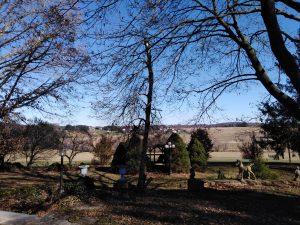
Many generations sat at the family table making it noisy, warm and live. Grandpa said the prayer. Turkey was served with many tasty sides. Some food combinations were entirely new for me… Having turkey with sweet strawberry jello was unusual. Or with cinnamon-sprinkled baked apples. Both were delicious on their own right! Two recipes I pencilled down for my family – a broccoli salad and a strawberry jello though will use them differently. If the broccoli salad perfectly fits into my vision of appetisers, the jello is for the desserts collection.
After the main men were watching sports, children were surfing the Internet, and the women cleaned the dishes and put cakes, tarts and torts on the table. Chitchat spiced with jokes and old days funny stories were all day long. What else would you wish for?
Sharing this day with this American family recalled childhood memories when I was stepping into my Granny’s arms in a warm kitchen smelled with baked pies and pastries from chilly and wet outdoors.
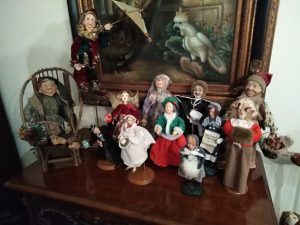
Americans see Thanksgiving as a day of feasting, football and family. Why not? Traditions are not bad at all. In the modern busy life, family dinners link us together letting stop the moment, smile at each other and thank for being here and now. By the end of the day, the family matters more than any anything else. Isn’t it?
Coming to live and work for a short period ignites opposite feelings. Should I see all the places recommended by Tripadvisor or do it at my pace as it happens? What if I miss something worthy? Perhaps, your own intuition balances somehow both.
I have discovered and loved two buildings in Baltimore. One is the building of Barnes & Noble bookstore in Inner Harbour and the other is Mount Vernon Place Church. Both have a great history behind and give a very warm feeling when you are inside.
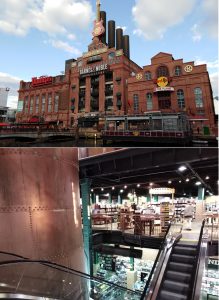 Barnes & Noble bookstore is located in the former Power Plant. The features are easily spotted. From outside, the building looks like a Plant for modern social activities. Ugly slightly, isn’t it? Though, it is a different feeling when you enter the bookstore. The Plant scaffolds, chimneys and pipes are nicely crafted into a warm welcoming environment. Even lights are dimmed as back then. Rambling through the bookshelves and feeling the magic of the place and unread stories on them. You can pick up a book, sit where you are and enjoy the reading. Maybe it is the feeling of my childhood full of books and hours of reading?
Barnes & Noble bookstore is located in the former Power Plant. The features are easily spotted. From outside, the building looks like a Plant for modern social activities. Ugly slightly, isn’t it? Though, it is a different feeling when you enter the bookstore. The Plant scaffolds, chimneys and pipes are nicely crafted into a warm welcoming environment. Even lights are dimmed as back then. Rambling through the bookshelves and feeling the magic of the place and unread stories on them. You can pick up a book, sit where you are and enjoy the reading. Maybe it is the feeling of my childhood full of books and hours of reading?
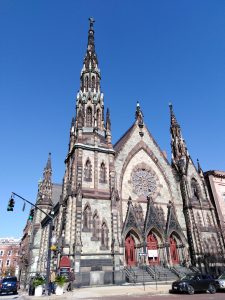
Mount Vernon Place Church is next to the Washington Monument and recalls old Catholic Cathedrals in a Victorian Gothic Style. Built in 1872, the Church is actually the United Methodist Church from the very beginning. It is beautiful inside as well as outside. The stained glass and carvings have Nature themes. A big rose window in the rear of the church was inspired by the one in Notre Dame. It has an interesting history which you can read here. I discovered this place by chance and am glad that this chance came from my host family. I saw the interior not only the Church but also Asbury House. The mansion was a home to the first bishop of the Methodist Church in America – Francis Asbury (1745-1816). Have a look at the pictures, the furniture is well preserved, the staircase is similar to the one you can see in Slane Castle. Its light design makes it looks flying. Indeed, not everyone could use it at that times. Servants had a plain version at the back of the house, so none could have seen them moving in and out. Lots of blue and carved wood in the rooms. Incredibly beautiful.
